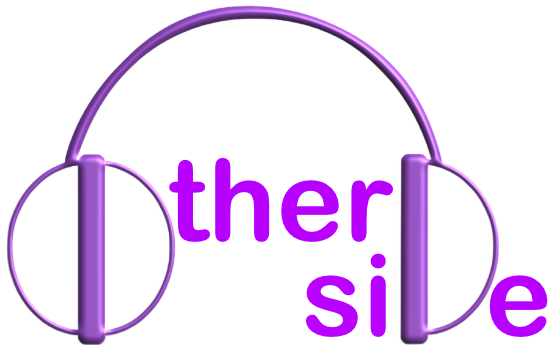FAQ
So, what exactly is this music format? It doesn't make any sense.
George here… You must listen to traditional radio if you’re asking about a “format!” I used to work in it. And, traditional radio is stuck in the “gotta fit into a small box” mentality of Top 40, Classic Rock, and Country music formats. They have their purpose. I grew up with traditional radio and embraced it for years. But, more than 10 years ago, I was setting up a test stream for KUVO/Denver and just loaded up my music library and clicked “Shuffle.” The sound was a fairly amazing mix of different musical styles, genres, and eras. It sounded good. That’s the idea behind The Other Side (but, there definitely is a little more structure now than just a bunch of shuffled music). If your preference is to listen to songs that were played every 45 minutes on the radio 40 years ago, you probably won’t be here too long. Otherwise, you’ll enjoy, perhaps, an acoustic singer-songwriter, followed by a Czech bluegrass band, then maybe an EDM remix, rounded out by a new hip-hop track. You may hear an occasional classic rock song, but it will probably be a deeper album track. Just listen for a while – you may be surprised at how much you enjoy “real music variety” that’s, well, actual variety (not a corporate radio marketing slogan).
No matter what, I just can’t get the goddamned stream to play – on anything! WHY???
Are you inside a company or government organization network? They tend to be a bit paranoid and block a whole bunch of internet ports. Because we both stream and run websites all on the same OtherSide.live domain, we’re using alternative ports for streaming. In particular, the default “secure” stream (your IT department should love “secure”) runs on Port 8443 instead of Port 443. If you want to run a non-secure stream, that’s running on Port 8000 (instead of Port 80). These are standard alternate ports, but may be blocked by your freaked-out IT department. Check with them and, if they’ll even answer you and tell you that those ports are blocked, buy them a happy hour drink and ask them to be nice and open up those ports. If they won’t, put your cell phone on the cellular network and listen through your phone (most cell providers don’t block standard ports) and let us know. If we get enough listeners who are being blocked in corporate/government networks, we’ll look for alternatives.
Where is the playlist search/album art/smartphone app/hey Siri/Alexa play/Tune In/iHeart/comment section/social media platform/wash-rinse-spin button?
Patience, my children… patience. All this is in the works (and, we’ll even post a wash-rinse-spin button graphic if it will make you feel better).
Why is your music too old/too young/too loud/too soft/too boring/too up-tempo?
Because you’re too young, too old, too loud, too soft, too overexcited, too stoned, or not stoned enough. Forget about it, light one up, open your mind, and enjoy the damned music! 😀
Why won’t the stream play in Internet Explorer?
You’re still using Internet Explorer? Wow… we didn’t think anyone was doing that anymore. Our stream uses AAC (Advanced Audio Coding) which sounds better than MP3 and is supported by all modern browsers (get it… “modern”). We suggest using Chrome, Firefox, or (yuck) Edge. Or, visit the How to Listen page and use one of our stream links in a media player, like WinAmp, VLC, iTunes, or (yuck) Windows Media Player.
What’s this “AAC” that you brag about all the time?
Advanced Audio Coding is a newer-than-MP3 method of compressing audio information in a smaller amount of network bandwidth. So, with a smaller amount of data on a slower internet connection, audio can sound better. Since George just loves great audio (and hates that traditional FM radio stations destroy it as a matter of practice), and since he suddenly found himself with tons of bandwidth with the City of Fort Collins new fiber broadband network, he decided on 256K AAC for streaming. If you load it up in an audio analyzer, it won’t be as good as CD or WAV or FLAC (lossless audio formats), but it will be damned close. It sounds awesome. Put on a nice set of headphones or good earbuds and listen for yourself. It’s pretty light on audio processing/compression, too. Which means you may hear one song a little louder/softer than the song before/after it. We try to even those out, but not with automatic compression/expansion that radio stations use to destroy music’s natural dynamic range.
Where is all this stuff running?
Pretty much everything comes out of our home in Fort Collins, Colorado. Original music playout comes from MegaSeg software on an iMac in the radio studio. Live segments may even include a little bit of vinyl on the Technics SL1200! The 128K MP3 stream is hosted by Live365, while the 256K AAC stream is fed to a streaming server on a high-powered laptop (in a spare bedroom, for now). And, the web server is running in the unfinished basement. All this is streamed to the world through Fort Collins Connexion, the city’s new fiber optic broadband network. We’re enjoying 1gb bandwidth, both downstream and upstream (and, the upstream bandwidth is what sends audio streams). In case you’re curious how fast that is, most current internal local area networks at businesses enjoy this speed – no, not Internet connection – INTERNAL NETWORKS! So, we have as much upstream Internet bandwidth as lots of big companies have for internal computers in their own buildings!
You’re making lots of money with this, right? Is it nice making a living playing music?
Well, that would require us to actually play ads or charge you to listen. We don’t. And, Live365 charges us a fair amount each month to host the 128K stream and pay all necessary royalties and fees. So, do the math. It’s OK… we have a sense of humor too.
